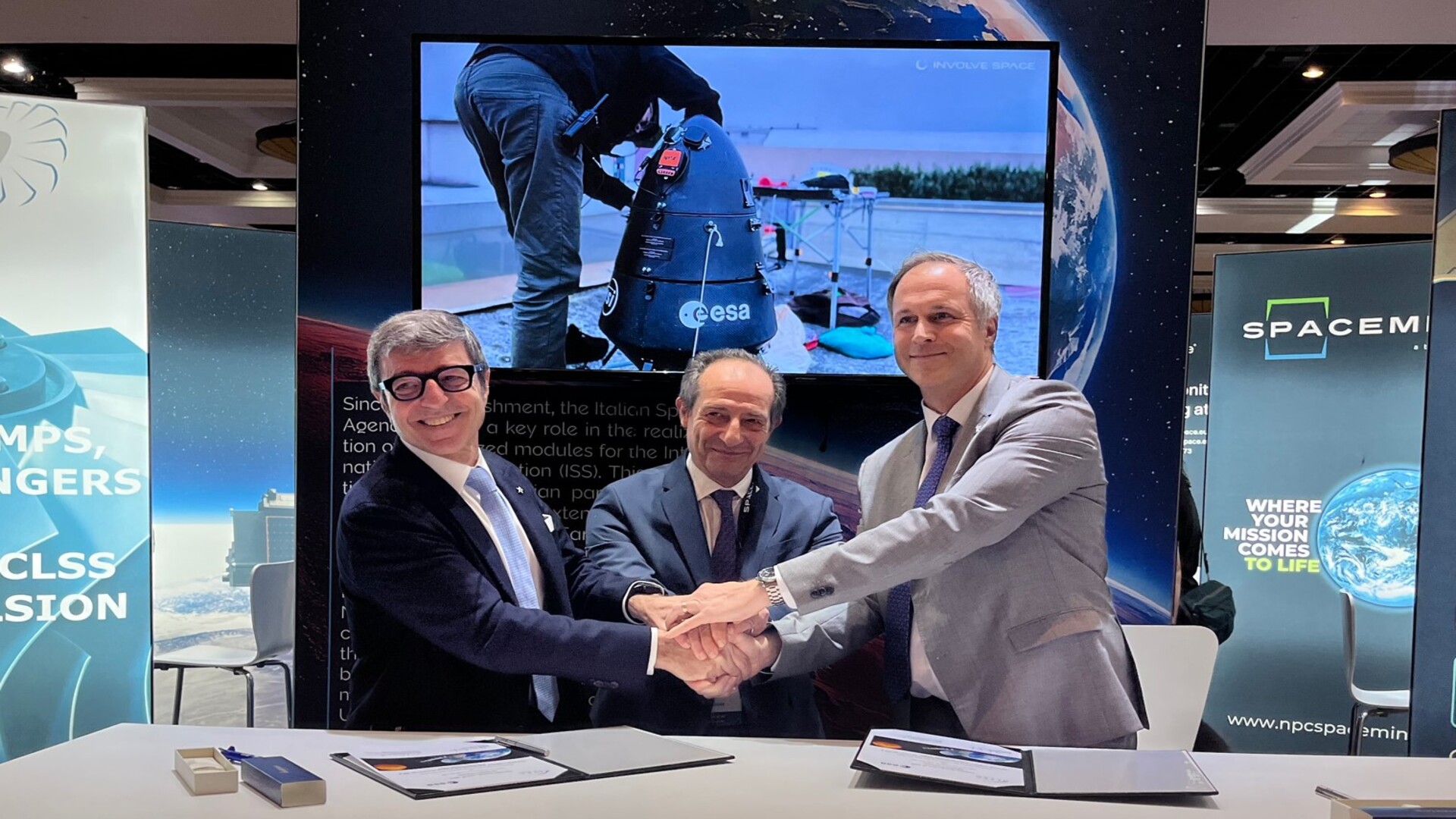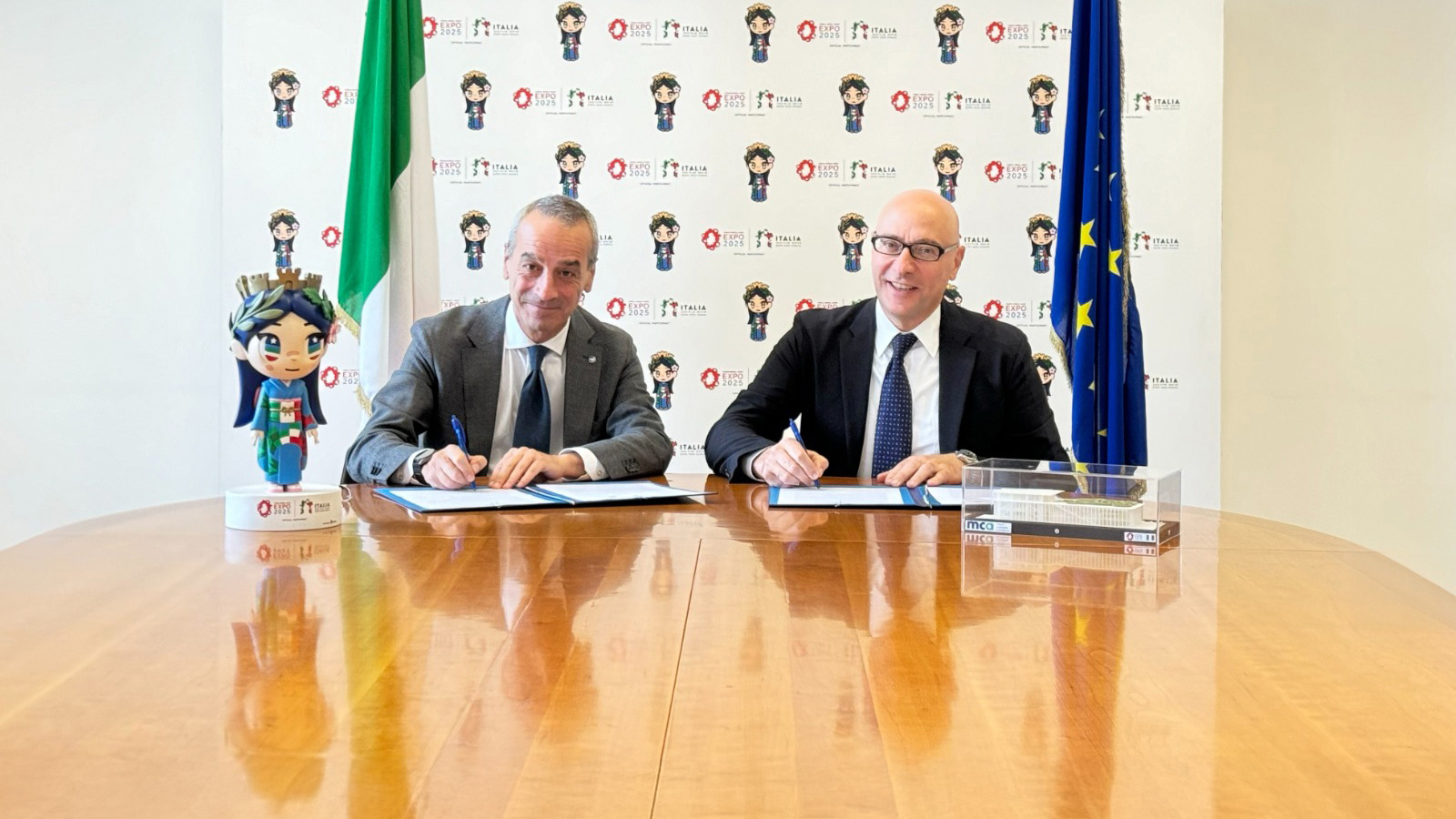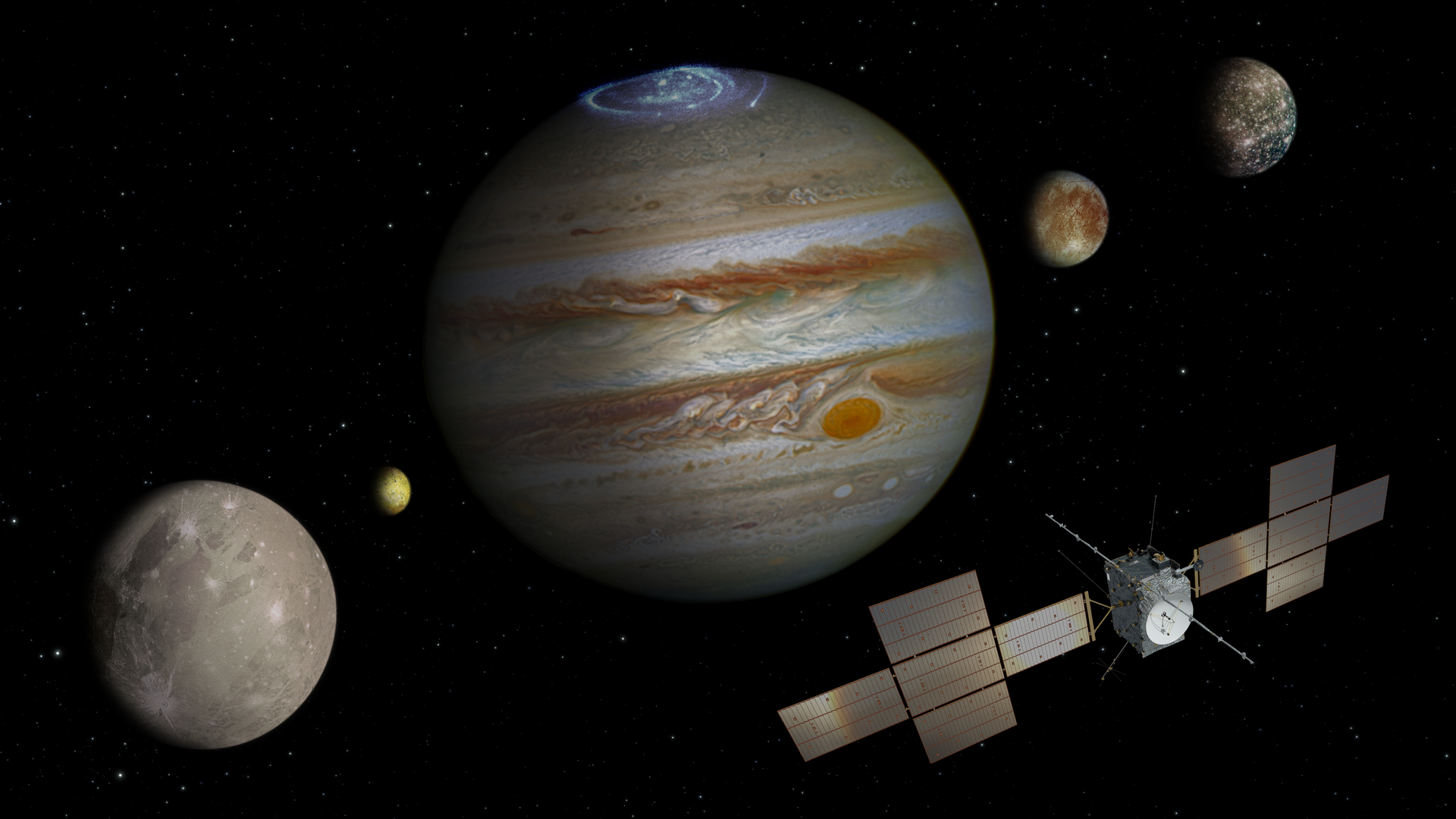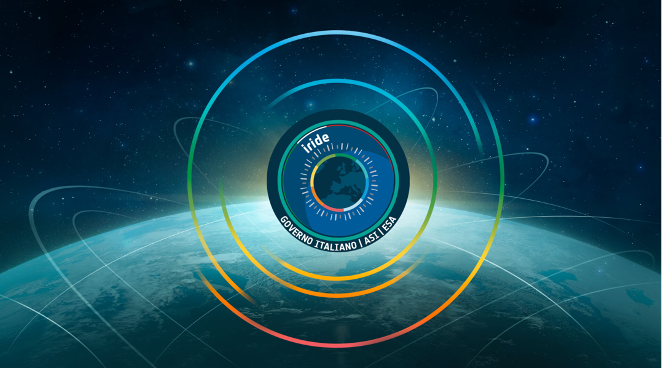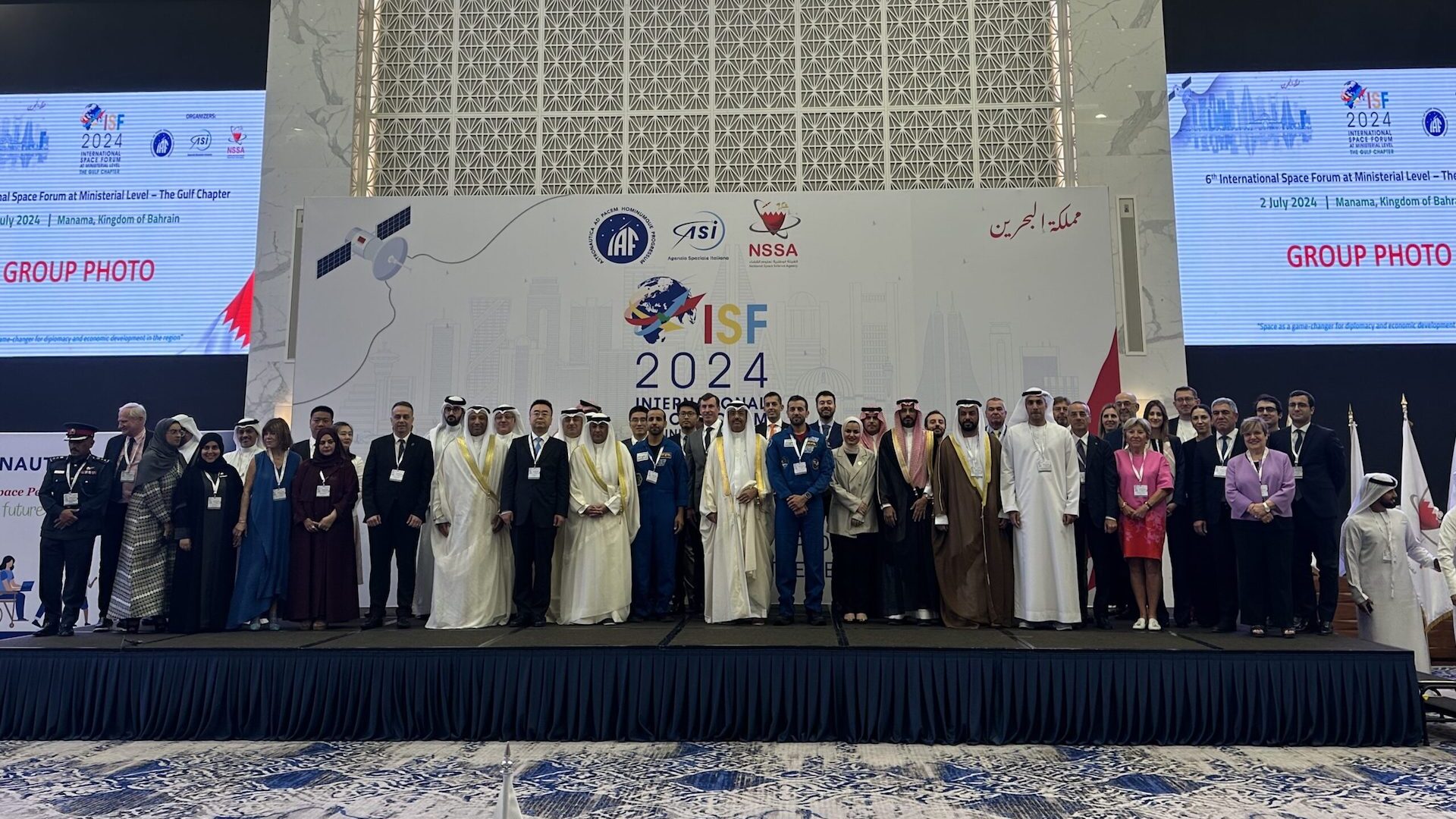JUICE is on a journey to conquer Jupiter and its moons. After a 24-hour delay due to bad weather conditions, ESA’s JUICE (Jupiter Icy Moons Explorer) lifted off from Europe’s Spaceport in Kourou, French Guiana. The effort and commitment of the Italian Space Agency in conjunction with the national scientific community and industry have contributed to making the mission become a reality. After an eight-year cruise, Juice will finally go into orbit around gas giant Jupiter performing multiple flybys to carry out a set of challenging tasks over a three-year period: from studying the planet's atmosphere and magnetosphere to analyzing the potential habitability of its moons - Ganymede, Europa, and Callisto - which could hold immense quantities of water buried under their icy surfaces. The probe will also seek to study what the conditions are for planet formation and how the Solar System works.
Giorgio Saccoccia, president of the Italian Space Agency (ASI) said:"The JUICE mission is a source of pride for our country. It confirms the key role we play and the ASI has served once again as the catalyst for the scientific and industrial skills and competencies that characterize our space sector at the international level. Italy has contributed nearly 50% of the total program providing instruments that are also the end result of international cooperation with other European agencies, the Israeli Space Agency, and NASA's JPL center. The project builds on over 20 years of intense work. The probe will reach Jupiter in approx. 8 years. Those who will analyze and study JUICE data are currently still at school or in college. This is further proof of how deeply rooted the spirit of sharing is in the space sector. It's a spirit that makes us look to the future with confidence".
Marco Tavani, president of the National Institute of Astrophysics said: "It is a historical day for Europe and Italy. The JUICE probe is en route to Jupiter and its icy moons, and INAF has been a key actor in the mission by taking the lead in the development and use of several scientific instruments such as MAJIS and JANUS, as well as providing a team of top-notch researchers. We are also proud that JUICE will fly all the way to the gas giant carrying a commemorative plaque in honor of Galileo Galilei and his "Sidereus Nuncius," the first written account of the incredible discoveries about Jupiter and its moons the Italian scientist made while observing them through his telescope. His apparently "useless" gazing up at the sky through a telescope has changed the world. INAF once again confirms itself as a leading Italian research organization in space missions to explore the Solar System and the Universe, proving the excellence of Italy's scientific sector."
The JUICE science payload includes 10 top-of-the-line science instruments, and the Italian Space Agency in cooperation with the Italian scientific and industrial community contributed to three of them and namely: the Radar Sounder for Icy Moons Exploration (RIME), the JANUS camera system and the 3GM radio science package. A fourth instrument must be added to the list: the MAJIS visible and infrared imaging spectrometer, a French-led project enjoying a bilateral partnership between Italy's ASI and France’s CNES.
The instruments aboard the probe are the result of several international cooperation programs between the Italian Space Agency (ASI) and JPL/NASA, the German DLR, the French CNES, and the Israeli Space Agency, ISA. The selection of the JUICE mission is the culmination of a process that began in 2004, when ESA started engaging in a broad consultation of the scientific community to identify goals for the European planetary exploration program over the next decade. The entities and universities that make up the scientific teams for the development of the four instruments marking the Italian participation are: INAF - National Institute of Astrophysics (with offices in Rome, Teramo, Padua, and Catania), University of Trento, "Sapienza" University of Rome, University of Roma Tre, Bruno Kessler Foundation (FBK), University of Bologna, University of Tor Vergata-Rome, Geosciences and Georisources Institute (IGG) of CNR, CISAS - University of Padua, Polytechnic University of Milan, University of Salento. Thales Alenia Space contributed to the mission by developing the RIME sounder in its facilities in Rome and L'Aquila, while Leonardo provided the hyperspectral optical head to observe and characterize clouds, ice, and minerals on the surfaces of the three moons. Leonardo also built JUICE's solar panels, the largest ever made for an interplanetary mission.
Italian instruments included in the JUICE science payload
RIME (Radar for Icy Moon Exploration) is an ice-penetrating radar optimized to remotely probe the subsurface structure of the Galilean moons of Jupiter. The radar signals will penetrate the icy surfaces of the moons down to a depth of 9 km, providing a vertical resolution up to 30 m. For RIME, whose Principal Investigator is the University of Trento, a cooperation is in place with the Nasa Jet Propulsion Laboratory (JPL) to use and share scientific data.
JANUS (Jovis, Amorum ac Natorum Undique Scrutator) is an optical camera system designed to monitor and study global, regional and local morphological features and processes on the moons, as well as map Jupiter's clouds. Leonardo, in partnership with the National Institute of Astrophysics (INAF), developed the system’s high resolution camera designed to monitor Jupiter’s atmosphere and study the planet’s icy moons searching for environments that may be suitable for the formation of life. The camera, to be used under INAF scientific monitoring, was developed also thanks to the cooperation with Germany's Space Agency (DLR) through a bilateral agreement with its Italian counterpart ASI.
3GM (Gravity and Geophysics of Jupiter and the Galilean Moons) is a radio science instrument comprising a Ka-band Transponder (KaT), and an Ultrastable Oscillator (USO), developed in partnership with Israel's Space Agency (ISA). The experiment is designed to measure Ganymede's gravity field up to the tenth harmonic and infer the extent of the subsurface global oceans of Jupiter's icy moons. The 3GM experiment will be also supported by the probe's a High Accuracy Accelerometer (HAA) needed to calibrate the spacecraft’s internal dynamical disturbances, in particular due to the propellant sloshing.
Special mention should be made also of Italy’s contribution to the development of the optical head of MAJIS (Moons and Jupiter Imaging Spectrometer), a hyper-spectral imaging spectrometer meant to observe Jupiter's atmosphere, from the troposphere to the stratosphere as well as the composition of the surfaces of Ganymede, Europa and Callisto (ice, salts, minerals and organic compounds). MAJIS, a French-led project, was made possible through a bilateral agreement between Italy's ASI and France's CNES and with the participation of INAF in charge of coordinating the instrument's scientific activities.
The ASI’s Luigi Broglio Malindi Space Center tracked the acquisition of the Ariane 5 rocket after the launch from the Kourou spaceport at 12:15:01 TU. The JUICE signal was acquired at the Malindi Space Center 22 minutes and 11 seconds after liftoff and tracked for one hour and one minute.
Malindi is the only station that had visibility during the separation of the third stage of the launcher and especially during the separation of the JUICE (Jupiter Icy Moons Explorer) probe from Ariane 5 upper stage. The probe will make detailed observations of the giant gas planet and its three ocean-bearing moons.
JUICE separation occurred at 1631.217 seconds after liftoff. Some telemetry frames will be sent in real time while the complete block of recorded data will be sent once the acquisition is complete.
The JUICE probe signal was acquired in real time at the Malindi Space Center by using ESOC Malindi-X antenna; the acquisition of JUICE lays the ground for the acquisition in July of EUCLID from the Malindi Center. Euclid is a European Space Agency space telescope that will be used to study the evolution of the universe, dark matter, and dark energy.
Watch a replay of the event organized by the Italian Space Agency in conjunction with the companies, research organizations, and universities participating in the ESA mission.

